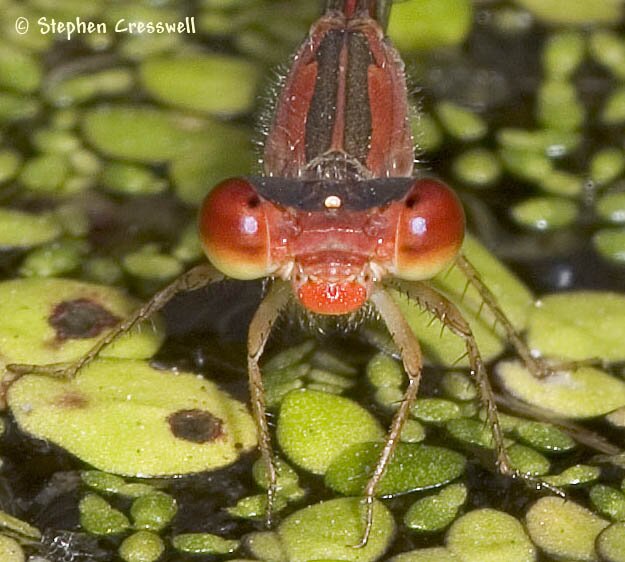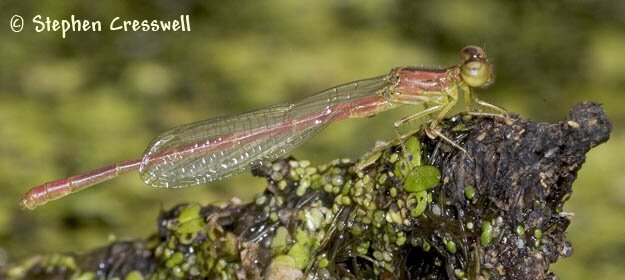

Family: Coenagrionidae
Length: 25-31 mm
This little damsel has been reported from only one West Virginia county, Cabell. From there you would have to drive 150 miles to the next nearest locality, in Casey County, Kentucky. This species is most common to the south of West Virginia and Kentucky. So one reason this species is seldom seen in West Virginia is that it is primarily a southern species that is here near the northern edge of its range.
 Another factor that may be limiting the number of sightings is that this species is really hard to see. Despite its bright red coloration, the "busy" pattern of its favorite perch, Duckweed, helps hide its slender form. Also, the Firetails sometimes perch two or three feet from dry land, making it hard to spot them. The photos on this page were taken by a photographer up to his waist in water!
Another factor that may be limiting the number of sightings is that this species is really hard to see. Despite its bright red coloration, the "busy" pattern of its favorite perch, Duckweed, helps hide its slender form. Also, the Firetails sometimes perch two or three feet from dry land, making it hard to spot them. The photos on this page were taken by a photographer up to his waist in water!
The various species of Duckweeds are the worlds smallest flowering plants, and they are widespread in the Mountain State. To find Duckweed Firetails, try scanning duckweed leaves with binoculars. Look carefullythese creatures barely exceed one inch in length.
Duckweed Firetails are unique in the Eastern United States in having a bright red abdomen unmarked with black. On the thorax, there are no dark stripes on the sides, but on the upper surface are two black stripes shaped like the numeral "1."
Males have overall bright red coloration, while females and immature males are duller red or yellowish brown. In common with the males, the females and immature males have the two thoracic stripes shaped like a "1," and unmarked abdomens.
 |
| The dorsal view shows a completely red abdomen, setting it apart from species like Amphiagrion saucium, the Eastern Red Damsel. On the thorax, note the unique shape of the two black stripes. |
 |
| On this immature male, the coloration is duller, and the eyes are not yet red. The coloration of females is also duller, and may in fact be more yellowish brown than red. But on both adults and immatures, on both males and females, the unmarked abdomen and the characteristic pair of dorsal thoracic stripes are distinctive. |


